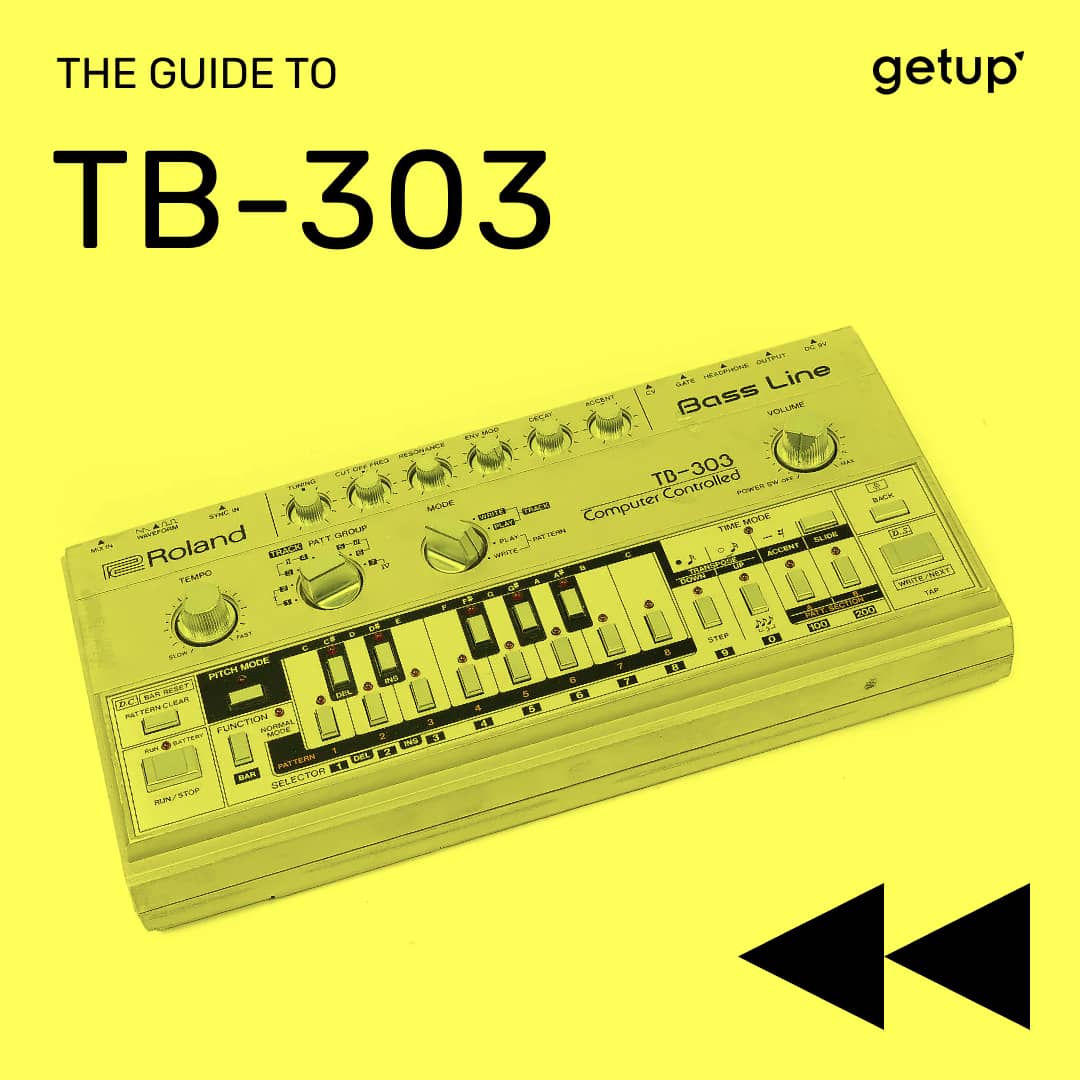Few electronic instruments are recognisable as the iconic Roland TB-303. It’s impact has helped to shape the sound of new-wave, italo disco, Chicago house and UK rave culture. Initially viewed by many as a primitive, ugly sounding instrument, in the hands of pioneering electronic producers, the 303 created otherworldly, futuristic dance music. Appearing in Chicago clubs during the mid-80s, this strange, mind-warping sound sent dance music into overdrive.
Released in 1982 and developed by Tadao Kikumoto, the huge success of the 303 came about by complete accident, or at least not in the way Roland intended. The synthesizer had been originally designed and manufactured to create a backing track for guitarists playing alone. The company released 10,000 units and invested a huge sum in marketing the product. The problem was that, completely unused to technology of this kind, guitarists couldn’t figure the thing out. The manual wasn’t much use either, admitting that while the 303 “may seem a little complicated” users “take their time and master each step”.
Unsurprisingly, the instrument was a flop. However, there were some notable early appearances for the 303. In 1982, Heaven 17 used the synthesiser in their track ‘Let Me Go’, while the post-punk band Orange Juice featured it prominently in their hit track ‘Rip It Up’ in 1983. That same year, italo disco pioneer Alexander Robotnick also made use of the 303 on his defining track ‘Les Problemes d’Amour’. A key moment for the 303, the track became a hit across the pond, selling nearly 12,000 copies in the U.S.
‘Les Problemes d’Amour’ took the disco sound of producers like Giorgio Moroder and reshaped it into something strange and new. It was a hit in the clubs of Chicago, where DJs like Ron Hardy and Frankie Knuckles were already helping to reinvent the tired disco genre. Inspired by the sound, aspiring bedroom producers went out and bought their own Roland 303s. The machines were an attractive purchase, owing to its initial commercial failure. Many machines were heavily discounted and widely available in pawn shops.
For producers looking to create the next big sound, the beauty of the 303 came from its idiosyncrasies. For instance, by removing the batteries, users could make the base patterns on the 303. This can be heard on Phuture’s classic house tune ‘Acid Tracks’, the title from which acid house got its name. The appeal of the 303 was also in its nearly infinite set of parameters, which could morph and change sounds far beyond anything people had heard before.
Many musicians followed in the squelching footprints of ‘Acid tracks’. By the late 80s, the 303 was a prominent part of electronic music both in America and across raves in the UK. The instrument helped kickstart an electronic music revolution and birthed the second summer of love.




.jpg)
.jpg)
.jpg)